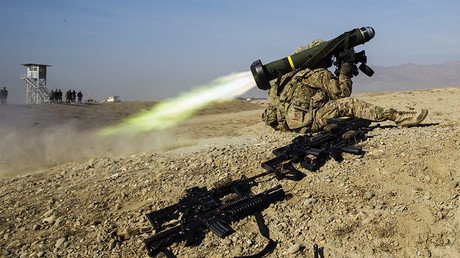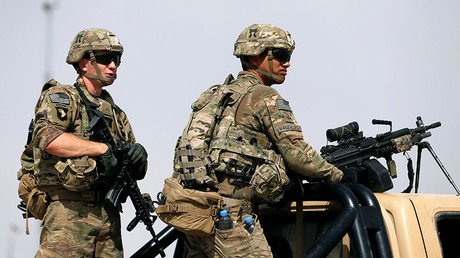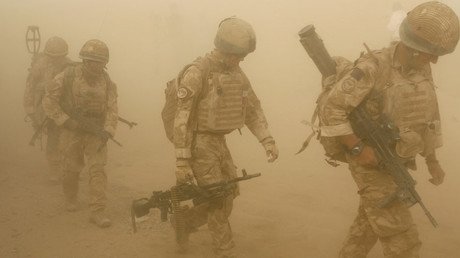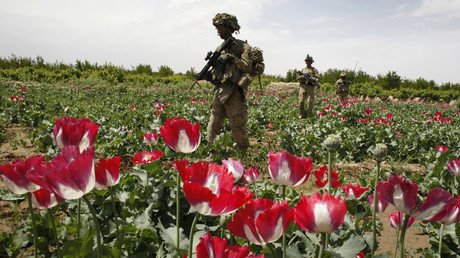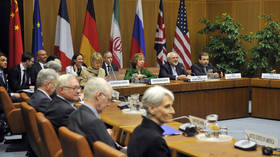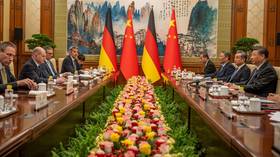Winning in Afghanistan: Trump’s pipe dream
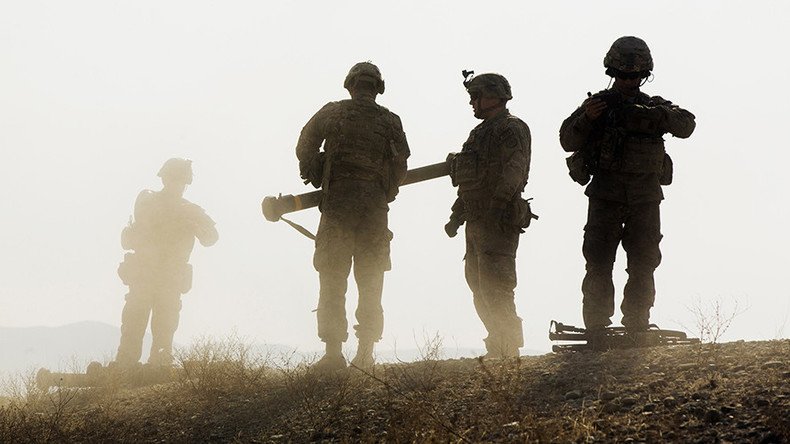
Trump’s Afghanistan plan is neither a game-changer nor a sharp departure from what we’ve seen since the George W. Bush administration. But it creates avenues for India to play a larger role in Afghanistan and is likely to cement the Pakistan-China alliance.
Sixteen years into the US’ longest continuing war, déjà vu and quagmire are the two words that best characterize what Bush had considered a first front in a global “campaign against terrorism” and what Barack Obama had termed a “war of necessity.”
Now Trump has jumped on to this bandwagon by arguing that “a hasty withdrawal would create a vacuum for terrorists” and that “our troops will fight to win” and secure “an honorable and enduring outcome.” With an estimated 4,000 extra American troops slated to be dispatched to Afghanistan, the US will have about 13,000 boots on the ground for an indefinite time span.
Repeat loop
That an isolationist and domestically-inclined president like Trump would disregard his own “instincts” and repeat the formula of his predecessors of open-ended military intervention says something about Afghanistan as a vortex and the ‘graveyard of empires.’ It has a magnetic nature and geographic location which attract foreign players from far and near who end up burning their fingers or imploding.
Trump’s rehashing of old policies is also a sign of how he is being corralled by the Republican Party establishment in Washington. The troubles experienced by Iraq after the total American troop withdrawal by Obama in 2011, and by Afghanistan itself, which was abandoned by another Democrat, President Bill Clinton, in the 1990s, have become staple Republican memes to admonish against hasty pullouts from wars.
The crux of the US conservative outlook is that American military presence in troubled parts of the world prevents collapse, chaos, and extremism. Unsaid but also understood in this assumption is that projecting US military force is the best way to keep America’s regional rivals and competitors in check. Trump has, however reluctantly, been coached into this tradition by the mainstream Washington establishment whom he refers to as “my cabinet and generals.”
Victory in a lost cause
Can America ever win in Afghanistan with a mini surge of merely 4,000 troops when it could not vanquish the Taliban and allied jihadist groups and secure the Afghan state during peak deployment of 98,000 forces in 2010?
Sounding like a mimicker of Obama, Trump has narrowly defined success as “obliterating ISIS, crushing Al Qaeda and preventing the Taliban from taking over Afghanistan.” But none of these objectives can be realized without a negotiated political settlement to the war in Afghanistan, which Trump himself has admitted “nobody knows if or when that will ever happen.” His hope that a firm US military push on jihadists will pressurize them to realize the futility of endless war and coerce them to seek peace with the Afghan government is as naïve today as it was a decade ago.
Having gained control of 40 percent of Afghan territory, the Taliban will treat the minor Trump troop bump as a pinprick to be brushed aside, not a sledgehammer that will erode their onward march. The resilience with which the Taliban continue to replenish their ranks despite losing thousands of fighters every year reveals that governance failures (the Taliban appeal to ordinary Afghans by alleging that the Americans are in their country to prop up “thieves and corrupt officials” of the Afghan state) and ethnic grievances (the ‘Afghan nationalism’ of the Taliban is basically Pashtun nationalism) are at the heart of the malaise.
It is precisely these core socio-political problems which require a comprehensive effort at “nation-building,” a task that Trump, like Obama, wants to avoid at all costs. How can America achieve victory by skipping over the basic disjuncture between its weak will and its grand ambitions of eliminating terrorism and stabilizing the Afghan state? Trump has no answer to this fundamental contradiction.
The India card
The most discussed element in Trump’s new policy is his invitation to expand India’s involvement in Afghanistan. His exhortation that India should “help us more with Afghanistan, especially in the area of economic assistance and development,” was followed up by his Ambassador to the United Nations, Nikki Haley, commenting that “we’ve got to put the pressure on India that they have to be part of the political solution.”
To an extent, this line mirrors the Obama administration praising India and urging it to step up its presence in Afghanistan. But one changed factor is that Trump is less bothered about hurting Pakistani sensitivities than Obama when it comes to bringing India in as a donor and security provider in Afghanistan.
By painting Pakistan as a problematic actor and hailing India as a constructive one, Trump is taking sides much more unhesitatingly than Bush or Obama. So sharp is the contrast Trump has drawn between Pakistan as a negative player and India as a positive one that the strategic establishment in Islamabad has let out howls that “America is in cahoots with India against Pakistan.”
In India, analysts are mulling whether Trump wants just more Indian civilian aid to Afghanistan (New Delhi has spent over $3 billion thus far for Afghan infrastructure and economic development), more military assistance to the Afghan government, or something else.
Since the Taliban are wresting the advantage in the latest fighting season, India is gravely concerned about the possible crumbling of the Afghan state which could embolden jihadists in the entire South Asian region and impact Indian control of Kashmir.
Independent of Trump’s prodding, India has to ramp up its security contributions to Afghanistan to preserve India’s own national interests of ensuring a moderate, non-jihadist Afghan state. It could offer to work alongside the US on strengthening Afghanistan’s Air Force, which remains rudimentary.
Trump is perennially into penny-pinching and asking US partners and allies to shell out more money for common causes. His “pressure” on India to rescue Afghanistan might be an opportunity for New Delhi to go beyond Afghan infrastructure-building and significantly increase its training and advisory capacities for branches of the Afghan military.
Indian Prime Minister Narendra Modi should declare all-out support for the beleaguered Afghan state apparatus short of placing Indian combat troops in Afghanistan. To those who worry that Trump’s dragging of India further into Afghanistan will anger Pakistan and make Islamabad even less agreeable to peace in South Asia, relations between India and Pakistan are already at rock bottom and cannot get any worse.
US making Pakistan ‘scapegoat’ for Afghan failures – Islamabad fires back at Trump’s new strategy https://t.co/dUMgZBDoF8
— RT America (@RT_America) August 23, 2017
Taking the Pakistani bull by the horns?
If the US muddled through all these years in Afghanistan and will also do so under Trump, it is not only owing to myopic vision and shoddy understanding of grassroots realities, but also a colossal obstacle named Pakistan.
Successive American presidents have held Pakistan in suspicion and distrust for its “double game” of pocketing generous dollops of US military aid (estimated to be in excess of $30 billion since the US invaded Afghanistan in 2001) while harboring and training jihadist proxies like the Haqqani network and other factions of the Taliban which attack American forces and keep the Afghan state off balance.
When Bush sent Pakistan an “unusually tough message” in 2007 to halt infiltrating jihadists into Afghanistan, or when Obama’s Secretary of State, Hillary Clinton, warned Pakistan in 2011 not to rear “snakes in its backyard,” Washington displayed it had minimal faith in Islamabad.
Yet, the aid kept flowing because the US calculated that it had no choice but to humor Pakistan to get at least limited cooperation from it. Geographical dependence on Pakistan for the supply lines of the US war effort in Afghanistan, as well as fear that Pakistan’s Inter-Services Intelligence (ISI) would render Afghanistan utterly ungovernable, meant that no American government resorted to extreme measures to rein in Pakistan.
Is Trump going to be a much harder taskmaster? His confidence that Pakistan “will have to change” and “change immediately” its policy of “harboring militants and terrorists” is misplaced. Pakistan has responded defiantly to Trump’s criticism of its role in Afghanistan by saying “Let it come. Pakistan shall do whatever is best in the national interest.” The underlying clash of interest between Washington and Islamabad about the nature of the desired regime in Kabul is such that Pakistan will not cave in to Trump’s diktats.
The leverage that the US has to bend Pakistan to its will is often exaggerated and constantly shrinking. With Beijing pumping investments and loans as part of the $46 billion China Pakistan Economic Corridor (CPEC), Islamabad’s dependence on Washington’s handouts is not as pronounced as it once was. The mocking reactions in Pakistan to Trump’s threats suggest that Islamabad believes nothing can hamper its current policies of interfering in and influencing Afghanistan’s internal affairs.
Suppose Trump adopts harsh concrete measures of terminating US aid to Pakistan and also revoking Pakistan’s status as a ‘major non-NATO ally’ of the US – ideas dangled by Trump administration figures as likely to be implemented if Pakistan does not cease abetment of jihadists in Afghanistan – the Pakistani military would be affected but not crippled.
Should Trump go further and intensify US drone attacks on Taliban, Al-Qaeda, and ISIS fighters sheltering inside Pakistani territory, the Pakistani Army would look to rally citizens under the banner of nationalism and independence from American hegemony, with the assured safety net of China’s alternative patronage.
Pakistan’s game plan is to delve deeper into alliance with China if the US cracks the whip, thereby forcing Washington to recalculate if it might lose Pakistan to China forever and forfeit whatever marginal influence it has left over Islamabad. The proverb that “you can lead a horse to water but you can't make it drink” holds good for US-Pakistan relations.
For Washington, Islamabad remains a necessary evil and there is no happy resolution to this complex bilateral equation scarred by what former Pakistani diplomat Husain Haqqani calls “magnificent delusions” and “mutual incomprehension.”
The eternal war
But all said and done, no matter how strictly Trump tightens the screws on Pakistan and how far he promotes India in Afghanistan, the ultimate dream of ending this long, long war is as unattainable today as it was when it commenced in 2001. This is because not everything troubling Afghanistan is external to that country.
Trump is mostly selling old wine in a new bottle and has no global imagination for fixing Afghanistan’s myriad domestic ills. Some interesting geopolitical possibilities are indeed emerging due to his definite tilt in favor of India, but this factor alone is not sufficient to alter the course of the Afghan war. Afghanistan will be different in the Trump presidency. For better or worse is anyone’s guess.
Sreeram Chaulia is a professor and dean at the Jindal School of International Affairs in Sonipat, India. He can be followed @sreeramchaulia
The statements, views and opinions expressed in this column are solely those of the author and do not necessarily represent those of RT.

